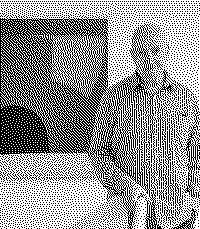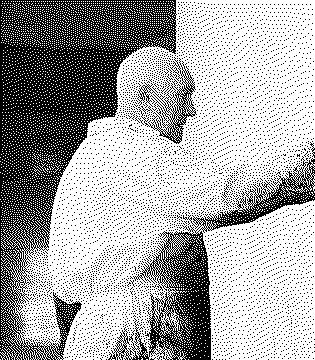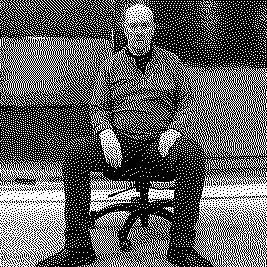Artists/Sean Scully
Fast Facts
Abstract Style
Scully is best known for his abstract paintings featuring stripes or bands of color, often layered or juxtaposed in a grid-like format. His work is often associated with Minimalism, but it also shows a strong emotional and sensual component, setting it apart from the more rigid forms of Minimalism.
Color and Texture
His use of color is highly nuanced, and the texture of his paintwork, often thick and tactile, adds depth to his compositions. Scully’s paintings evoke a sense of structure while simultaneously offering a deeply emotional experience.
Multimedia Works
While best known for his paintings, Scully has also worked in various other media, including printmaking, drawing, watercolor, and photography.
Biography



Sean Scully, an influential figure in contemporary art, has carved out a significant niche in the realm of abstract painting with his distinctive approach that intertwines emotional depth with geometric precision.
Born on June 30, 1945, in Dublin, Ireland, Scully's family relocated to London when he was a child, a move that would lay the groundwork for his eventual artistic journey. His formative years saw him studying at the Central School of Art in London, Croydon College of Art, and ultimately Newcastle University, where he earned his Bachelor of Arts in 1972.
Scully's early work, deeply influenced by the industrial landscapes of Newcastle and the visual effects of Op Art, featured precise, horizontal bands that played with the viewer's perception of depth and movement, reminiscent of the "supergrids" and the "low optical hum" found in Bridget Riley's work. This period was marked by an exploration of the visual dynamism and structural complexities of urban living, themes that would continue to evolve throughout his career.
The transition to New York in 1975 marked a pivotal shift in Scully's artistic direction. It was here that he engaged with Minimalism, only to later challenge its confines, seeking to infuse his work with more human elements—spirituality, emotion, and metaphorical richness. This ambition led to the creation of his renowned "floating paintings" in the 1980s, which blurred the lines between painting and sculpture, engaging viewers in a dialogue about space and perception.
One of Scully's most significant works from this era, "Backs and Fronts" (1981), marked a decisive break from Minimalism, showcasing his mastery of color, space, and expressive brushwork. This piece, along with others like "Heart of Darkness" and the "Wall of Light" series, underscored his evolving style that married geometric abstraction with a palpable, emotive depth.
Throughout the 1980s and beyond, Scully's work garnered international acclaim, with major exhibitions at prestigious institutions such as the Ikon Gallery, the Museum of Modern Art, and the Whitechapel Gallery. His artistic evolution saw him experimenting with various mediums, including printmaking and photography, further expanding his exploration of texture, light, and architectural forms.
In the 1990s, Scully's work took a poignant turn with pieces like "Paul" (1984), a triptych that serves as a moving tribute to his son, demonstrating the artist's ability to channel personal tragedy into profound expressions of grief and hope. This period also saw the development of the "Catherine" series, a homage to his relationship with Catherine Lee, which exemplifies the depth of his emotional and relational exploration through art.
Scully's influence extends beyond his prolific output as an artist; his academic roles, including a professorship at the Academy of Fine Arts in Munich, have enabled him to shape the next generation of artists. His contributions to the field have been recognized with numerous awards and accolades, cementing his legacy as a pivotal figure in the transition from Minimalism to a more emotionally resonant form of abstraction.
Sean Scully's work, characterized by its bold use of color, powerful geometric forms, and deep emotional undercurrents, continues to captivate audiences worldwide, embodying a rich dialogue between the tangible and the transcendent, the personal and the universal (Wikipedia) (The Art Story).
Importance
Sean Scully's importance in the contemporary art world and his cultural impact are significant, spanning various dimensions that highlight his unique contributions and enduring influence:
Humanizing Abstraction
Unlike many of his minimalist contemporaries, Scully’s work is imbued with a personal touch, making his abstract creations deeply human and reflective of individual stories. His art, often starting from the abstraction of the human figure, encapsulates personal narratives and experiences, linking abstraction to the human condition and the physical realities of everyday life (DailyArt Magazine) (Phillips).
Emotional and Spiritual Depth
Scully's paintings are renowned for their emotional resonance, achieved through the interplay of color, light, and form. His work explores the spiritual dimensions of abstraction, aiming to evoke and communicate profound emotional experiences and connect with viewers on an intimate level (Phillips).
Innovative Techniques and Mediums
Scully has been a pioneer in merging the tactile qualities of painting with architectural elements. His "Floating Paintings" and explorations in metal and aluminum panels exemplify his innovative approach to materials, straddling the line between painting and sculpture. This exploration extends to his significant contributions to printmaking and photography (The Art Story) (Phillips).
Interplay of Light and Landscape
The Landline series and other works reflect Scully’s fascination with the landscape and its elemental forces. By reducing these natural forms to their essence, Scully invites viewers to contemplate the interconnection of land, sea, and sky, imbuing his abstract compositions with a sense of place and the shifting moods of the natural world (Smithsonian Magazine).
Global Influence and Recognition
Scully's work has been exhibited globally, with significant retrospectives and exhibitions underscoring his status as one of the leading abstract painters of his generation. His influence extends beyond the art world, touching on the broader cultural consciousness through his ability to make abstraction accessible and emotionally engaging for a wide audience (Smithsonian Magazine).
Contribution to Art Discourse and Education
Beyond his artistic practice, Scully has engaged in intellectual discourse around art, contributing to a deeper understanding of the role and potential of abstraction in contemporary culture. His dedication to education and the mentoring of young artists has helped shape the next generation of creatives, ensuring a lasting impact on the art world (Phillips).
Technique
Sean Scully's technique in creating his abstract masterpieces involves a blend of traditional and innovative approaches, characterized by his distinctive handling of paint, exploration of texture, and engagement with emotional depth.
Layered Complexity
Scully constructs his paintings with a complex layering process, where horizontal and vertical bands of color bleed into and overlap one another. This method creates depth and movement, suggesting the infinite nature of landscapes and horizons. He utilizes a range of materials, including oil on linen and aluminum, to achieve varying effects and textures (The Art Story).
Hand-Painted Stripes
A signature element of Scully's work is his use of hand-painted stripes, particularly evident in his Floating Paintings. These stripes, applied directly onto the canvas or metal surfaces, exhibit a human imperfection and expressiveness, distancing his work from the mechanical precision of Minimalism (The Art Story).
Exploration of Space and Form
Scully's technique extends beyond the surface of the painting to engage with the physical space it occupies. His Floating Paintings, for example, project outward into the gallery space, blurring the line between painting and sculpture. This spatial investigation is further complemented by his interest in the illusion of architectural forms and bands of light created by the painted stripes (The Art Story).
Emotional Resonance
Beyond the physical techniques, Scully imbues his work with a deep emotional resonance. His paintings often reflect personal stories, relationships, and experiences, making each piece an intimate exploration of human emotion and connection. This emotive dimension is achieved through his choice of colors, the dynamic interplay of forms, and the tactile quality of his paint application (DailyArt Magazine).
Integration of Material and Memory
Scully frequently incorporates materials and symbols that resonate with personal memories or broader cultural narratives. For instance, his use of the spray gun and industrial materials reflects his connection to the working class and urban environments. Additionally, sculptures like Coin Stack evoke personal stories, linking abstract forms with deeply personal meanings (DailyArt Magazine).
Engagement with Abstraction and Figuration
Scully's approach to abstraction often hints at figuration, with his paintings suggesting landscapes, architectural forms, or even emotional states. This tension between the abstract and the representational invites viewers to find their own meanings and connections within his work (DailyArt Magazine).











